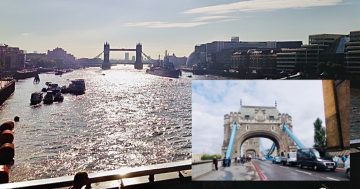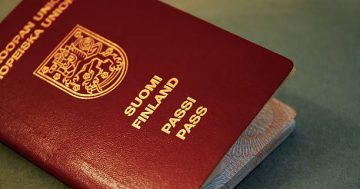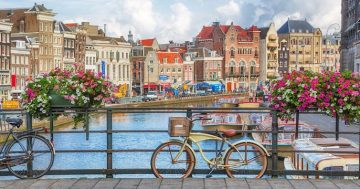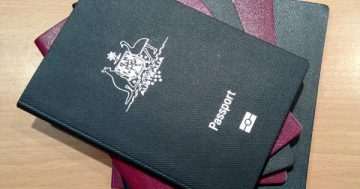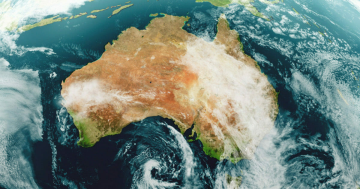Patrick Bixby* says there is a massive gap between the most and least powerful passports, which has implications for where people can travel, live and work.
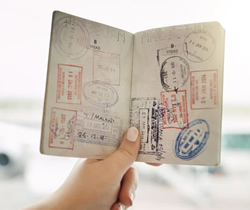 Salman Rushdie, the celebrated Anglo-Indian writer, once declared that the most precious book he possessed was his passport.
Salman Rushdie, the celebrated Anglo-Indian writer, once declared that the most precious book he possessed was his passport.
Rushdie had already published dozens of works to wide acclaim and considerable controversy, but acknowledged it was his British passport, doing “its stuff efficiently and unobtrusively”, that enabled him to pursue a literary career on the world stage.
On the other hand, Rushdie viewed the Indian passport he had held as a boy in the 1950s as “a paltry thing”.
“Instead of offering the bearer a general open-sesame to anywhere in the world, it stated in grouchy bureaucratic language that it was only valid for travel to a specified and distressingly short list of countries.”
Today, global mobility is on the rise.
According to the Passport Index, an interactive ranking tool, the World Openness Score reached an all-time high at the end of 2022.
This means passport holders around the world are receiving permission to travel to more countries without first obtaining a visa than ever before.
As pandemic-related travel restrictions eased in 2022, the total number of visa waivers increased 18.5 per cent globally.
Nearly every passport on the index, which includes 193 United Nations member countries and six territories, became more powerful, with holders receiving immediate access to 16 additional countries on average.
However, there’s still a massive mobility gap between the most and least powerful passports.
The United Nations may proclaim that “everyone has the right to leave any country, including one’s own, and to return to one’s country”, but the fact is, not all passports are created equal or treated with equal respect.
In my book, License To Travel: A Cultural History Of The Passport, I explore the evolution of travel documents and how passports have influenced the emotions and imaginings of those who hold them.
Writers and artists like Rushdie have played an important role in identifying and contesting disparities in freedom of movement.
They have also led the way in envisioning new forms of international openness.
Despite migrant crises, disease outbreaks, military conflicts, economic challenges and rising nationalist movements, the world is trending toward greater openness.
Still, the international community has dedicated little effort to collapsing persistent inequities in the global passport regime.
Whether we like it or not, our passports define who we are in the geopolitical order. Unsurprisingly, the world’s wealthy have better prospects.
Arton Capital, the investment firm that created the Passport Index, advises business people and other affluent individuals on ways to attain a second passport when it is advantageous.
At the top of Arton’s power ranking, holders of a United Arab Emirates passport can travel visa-free or obtain visas on arrival in 181 countries and territories.
United States passport holders rank a bit lower, with access to 173 countries. Australia is one behind at 172.
At the bottom of the list is Afghanistan, whose passport holders have direct access to just 39 countries. Holders of Syrian, Iraqi, Somalian and Bangladeshi travel documents fare only slightly better.
Nations sink to the low ranks for many reasons, including struggling economies, large displaced populations and turbulent histories of foreign invasion and civil war.
Even today, after the Brexit referendum, a United Kingdom passport still allows for travel to 173 countries without a prior visa. An Indian passport provides access to just 71.
How do we account for the human costs associated with these passport scores and rankings?
German choreographer, Helena Waldmann explored this divide in her 2017 dance work, Good Passports Bad Passports.
This production stages a series of dramatic encounters between two groups of dancers, sometimes separated by a wall of other performers.
It evokes frontier crossings, border patrols, passport checks and other aspects of the global migrant crisis.
Waldmann’s inspiration was the mobility gap. Travelling with dancers and crews from various parts of the world, she has frequently witnessed those with ‘bad’ passports being delayed and subjected to intense questioning.
Meanwhile, with her ‘good’ German passport, Waldmann has navigated the customs and immigration process quickly and easily.
Good Passports Bad Passports ends with a remarkable gesture of human solidarity.
As a spectral voice proclaims: “I believe that one day national borders won’t exist,” the entire cast steps to the front of the stage, interlocks arms and gazes out into the audience.
A world without borders or passport controls may be a utopian dream, but that hasn’t stopped other artists from imagining correctives to our current situation.
In 2009 Maltese writer, Antoine Cassar published a protest poem titled Passaport, printed in a small format and bound in a red cardboard cover mimicking the Maltese passport.
Rather than enclosing a photograph, personal data and the legalese of the Nation State, it contains about 250 lines of verse that object to the wounding force of the international passport system and its often brutal forms of exclusion and expulsion.
Passaport, as Cassar puts it, envisions “a world without customs and checkpoints, without border police out to snatch away the dawn, without the need for forms, documents or biometric data.
“A world without the need to cross the desert barefoot, nor to float off on a raft, on an itinerary of hope all too quickly struck out by the realities of blackmail and exploitation.”
As we emerge from the COVID-19 pandemic and face the devastating effects of climate change, the motivation to leave home in search of work and safety will only continue to grow.
However, the world still has a long way to go to open itself to the entire global community.
*Patrick Bixby is Associate Professor of English in the New College of Interdisciplinary Arts and Sciences at Arizona State University, United States.
This article first appeared on The Conversation website.


